At first glance, it’s easy to draw the conclusion that NHL 25 isn’t all that different than NHL 24. Even a look at the new features being touted by EA in this year’s game seem paltry when compared to some other recent editions, including last year’s innovations. The more that you play the game, however, the more that you begin to notice subtle changes that have a tangible impact.
Granted, most of these changes aren’t exactly earth (or ice) shattering, but they contribute to making the game more of a simulation of real hockey and less like the arcade version of the sport that it could feel like at times in the past. Despite the improvements to gameplay, it’s disheartening to see that certain modes and aspects of the game have not received the attention they need and are showing their neglect.
The most readily apparent change to gameplay is a slower pace on the ice that forces you to get a little more creative in generating scoring chances rather than relying only on speed to get to the net. The EASHL continues to offer hockey fans an accessible place to create players that can compete with and against others online without you needing to shell out any additional funds to maximize their skills. Franchise mode has been given some love in the form of changes that can keep you better attuned to the happenings around the league and in charge of your roster. Even the card-collecting Hockey Ultimate Team has slightly more appeal to the casual player now thanks to the introduction of a Wild Card mode that relies on drafting players and employing only a few choice cards from your collection.
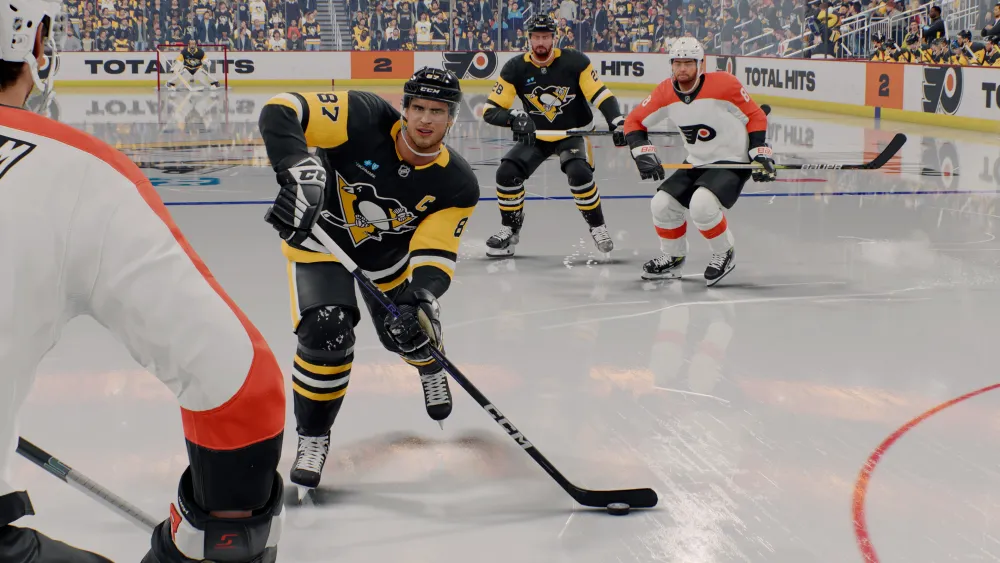
While the AI of CPU opponents and teammates has received further upgrades, they remain too easy to exploit regularly and prone to some puzzling decisions that will cost them dearly. Be A Pro, the series’ single-player career mode, returns almost entirely unchanged from last year, which means the mode has barely seen any improvements over the past few years. The new Grudge Matches add an interesting wrinkle to franchise mode but overextend their reach into EASHL, while the matchmaking leaves you longing for more ice time and less waiting around on the bench.
Let’s hop over the boards to take the ice and get a closer look at where the game is hitting the the net with a top-shelf snipe and where it deserves to spend a couple of minutes in the penalty box for its shortcomings.
What I Like
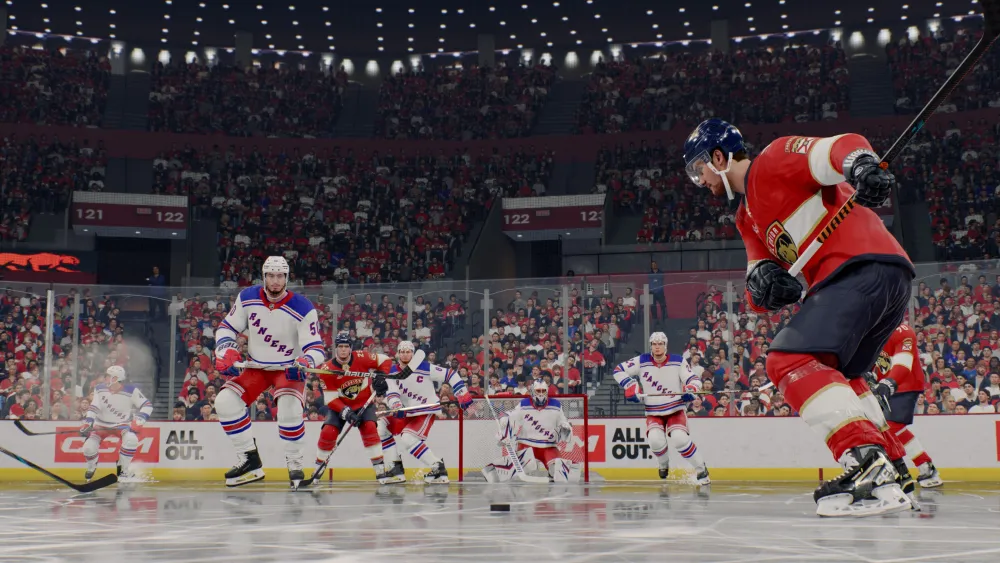
Gameplay
If you’re someone who returns to the NHL series every year, you’re likely to notice right away that the pace of play is no longer quite as frenetic as it has been in years past. With the action slowed down, plays will unfold in a way that resemble a real hockey game rather than an amped-up arcade version of the sport as it could previously. This is especially true when trying to find ways to score goals, as you aren’t able to rely so heavily on the skating speed of players to simply zip by defenders to get to the net. You’ll be forced instead to catch defenders out of position and hit the open man in the slot, or even resort more to getting ugly goals on shots from the point that find their way through traffic or are deflected past the goalie.
The unfortunate thing though is that this realistic speed somehow got ratcheted up through a patch as the early access period of NHL 25 ended and the game was officially released. That leaves the game now feeling a lot like NHL 24 with attacking becoming nearly as one-dimensional as it had been last year.
At least there are a few other new wrinkles to differentiate NHL 25 from previous editions and make the skill gap more apparent. A new system really puts the emphasis on timing in one-timers by requiring you to shoot the puck at the exact right moment when a pass comes your way and you wind up to propel the puck towards the net with some force. This prevents you from being able to spam the shot stick when you’re waiting for a pass or risk an errant shot that misses the net entirely. It does seem like the mechanic might be slightly overpowered at the moment in that it’s a little too easy to score on one-timers if you “green” your shot just like in NBA 2K and time it up perfectly.
Laying the body as a means of defending or intimidating your opponent has been refined as well to remove some of the glaring physics problems that plagued checking in NHL 24. It can be riskier now to try to line someone up for a big body check because if you whiff on that hit, it can leave you well out of position and open you up for odd-man rushes and breakaways. Similarly, you can no longer just hold down the hip check button and expect to send players flying in ways that defy all sorts of laws of momentum and gravity. You’ll need to be especially judicious now in deploying tactics when trying to defend, with sound positioning and a well-timed poke check perhaps now being the most dependable weapons at your disposal.

World Of Chel
Not that much has changed within the World of Chel, but it remains a fun and challenging way to compete with and against other people online. What’s particularly notable about the World of Chel is how you can create a wide variety loadouts for your created player that will allow you to equip them with a whole new set of skills based on what kind of strengths (and weaknesses) you want them to possess.
By tweaking their physical attributes and swapping in and out various boosts, you can customize your player in endless ways to see how they meld with others on the ice. As you ascend levels by playing, you’ll be able to unlock more loadouts so that you can easily switch between different types of players depending on the rest of your squad. With all of the boosts available to you right at the outset, you don’t even need to play a bunch to be able to get access to certain attributes.
It’s pretty amazing when you compare this to MyCareer in NBA 2K25 and how you’re forced to incrementally improve your created player with each game or else spend money to have them be anywhere close to elite. When you want to switch it up and use a different type of player in NBA 2K25, you better be ready to drop another $100 or devote an inordinate amount of time to get them ready for online play.
Of course, it’s obvious that NBA 2K25 can get away with these kinds of predatory practices considering how much more popular basketball is than hockey and how willing its player base is to fork out the extra money. But if you’re a fan of hockey, you can’t help but appreciate just how accessible the World of Chel is compared to similar modes in other games.
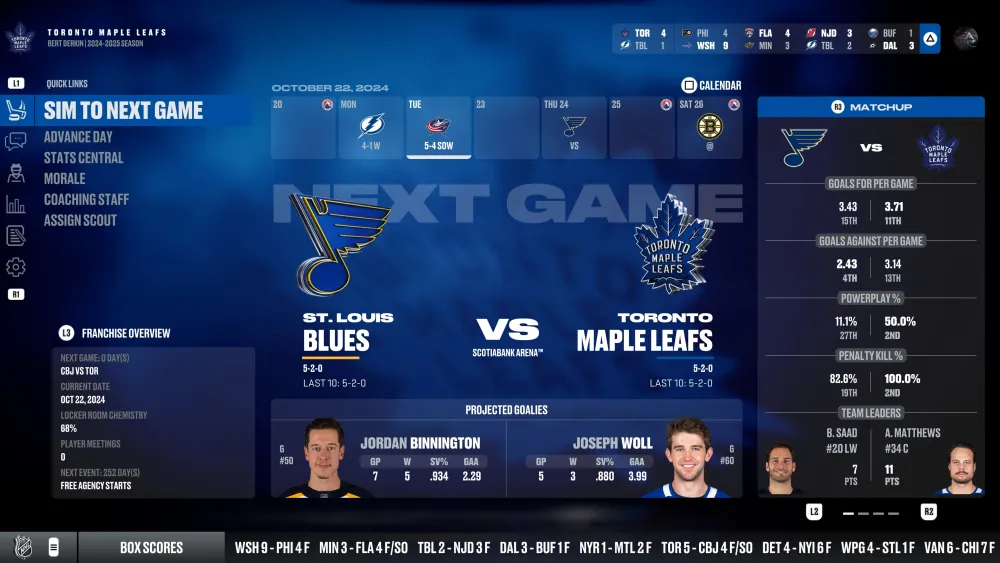
Franchise
Let’s get the bad news out of the way up front and say that there’s no return of an online franchise mode in NHL 25, which somehow gets even more disappointing with each passing year. Instead, the changes to franchise mode are largely cosmetic, aiming to make it easier to navigate and stay connected to everything that’s happening around the league.
It’s kind of funny how something as simple as box scores for games can help to keep you aware of what teams and players are performing well. You can also use a conversation presentation to negotiate contracts with players and discuss changes of position or playstyles. It’s great to see free agents take into account different factors when deciding what team they want to join, including things like market size and their chances of winning a cup. Overall, these are a respectable assortment of quality-of-life changes for a single-player mode that can often get overlooked by developers, but it’s still not enough to be considered a major upgrade.

Hockey Ultimate Team
As someone with a staunch record of rejecting most card-collecting modes and the pay-to-play ethos they so often represent, it’s hard to fully embrace Hockey Ultimate Team in NHL 25. There remains the incessant push to get you to purchase packs if you want to be able to add the best cards available to your lineup. It doesn’t help that the rewards, even with the introduction of XP progression, require you to play an astronomically high number of games if you want to come away with anything worthwhile for your efforts.
So what’s there to like about the mode then? The new Wild Card mode that manages to merge together a draft mode with the cards from your collection for balanced games. Thanks to a salary cap, you’ll only be able to use just a handful of your best cards while the rest of your lineup will be filled with players you draft. The games are quick so you’ll barely have time to get frustrated against a superior opponent before you find yourself matching up against someone else who might be closer to your skill level.
What I Don’t Like
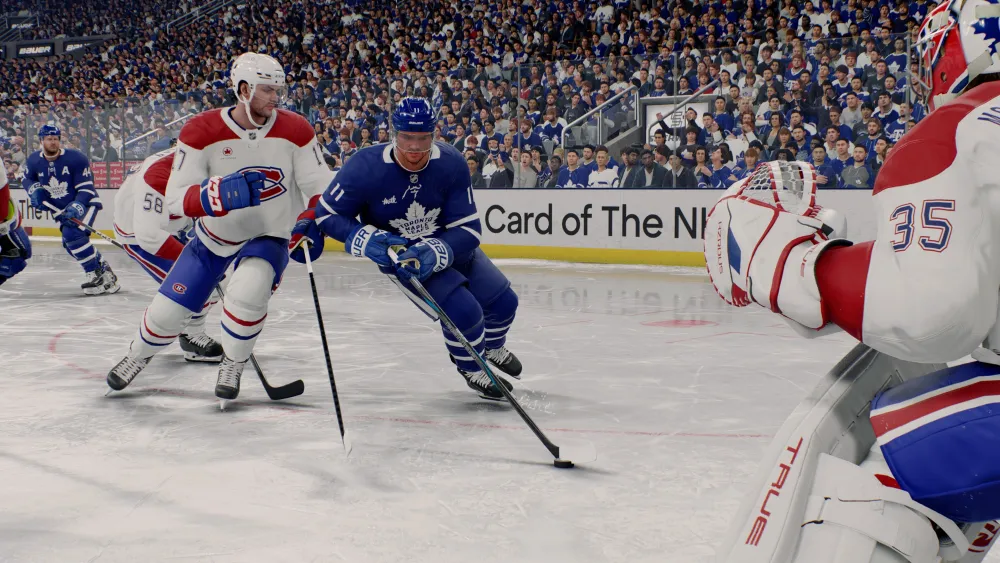
CPU AI
It’s not that there haven’t been improvements made to how CPU-controlled teammates and opponents perform on the ice; it’s just that there are still too many areas where they are lacking to get all that excited about them. The increased intelligence is evident in how CPU opponents on higher difficulties will seek to capitalize on the slightest mistakes you make and turn them into scoring chances. They’ll fire the puck on the net from the point more frequently while using traffic in front to act as a screen and bury any ensuing rebounds in the net in a flash. You also won’t see opposing CPU players do that dumb thing they would do in the past where they would skate all the way back into their own zone in a desperate attempt to protect the puck.
The AI’s biggest issues then are on defense, proving to be especially vulnerable and flat-footed when trying to contend with speed bursts. Defensemen will too often underestimate how fast an attacker is on a rush and allow them to skate right around them for a prime scoring chance from the front of the net. This lack of reliability can extend to the offense as well, where it can be hard to set up plays when your CPU teammates regularly fail to anticipate or react to your moves. On the other hand though, your CPU opponent will display some superhuman skills at times that strain believability, like when it comes to the same kind of insanely high passing percentages that have been an unfortunate staple of the series for years.
Be A Pro
It’s probably not worth spending any more time discussing the single-player career Be A Pro mode than the amount of time that developers spent improving the mode. It’s nearly identical to what was in NHL 24, something that’s considerably disappointing when you bear in mind that it was largely the same in the past couple of years before that as well. New players might find the journey to becoming an NHL star to have some appeal, but anyone who’s played the series recently is likely to experience some deja vu as they cycle through the same old career goals and interactions.
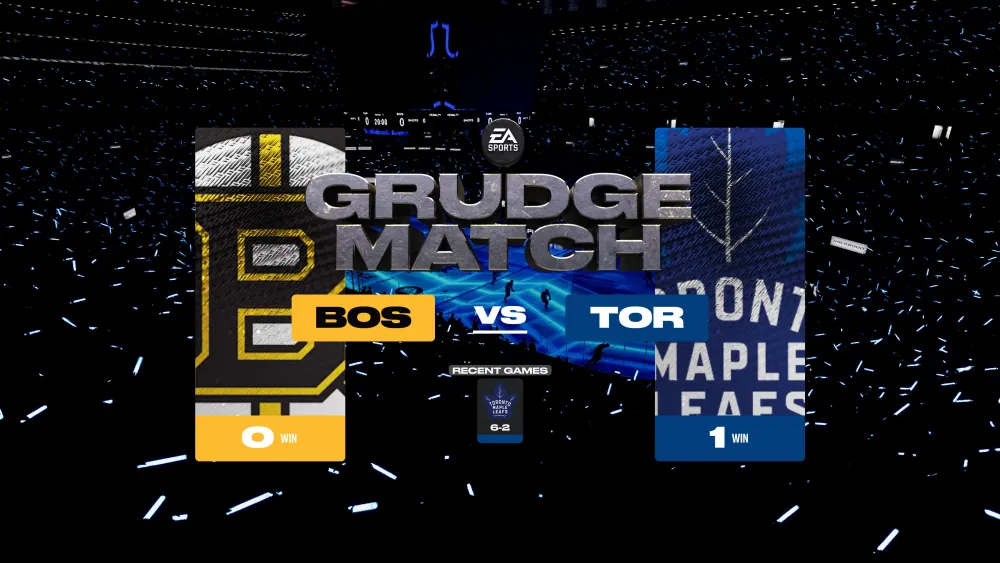
Grudge Matches
The new Grudge Match system in NHL 25 is a decent idea in theory but its implementation is rather clunky. The concept is that teams will organically develop rivalries when they play tightly contested games against each other. There’s a special presentation package that highlights these matchups when they occur and a specific player on each of the teams involved will see a boost to certain attributes based on what happened in the last meeting.
It’s a feature that’s at its best in franchise mode, where it’s natural to see bad blood developing between teams that play each other many times in a season. It’s less effective though with clubs in the EASHL, where you’ll find yourself pitted in grudge matches against teams that you have never even played before. It’s also annoying to find that the boosts your player receives during a grudge match can be ill-suited to your chosen loadout, rendering them all but useless at times.
Matchmaking
Matchmaking continues to be an issue for the NHL series, which is at least somewhat to be expected given that the player base is smaller for these games than some of the other big sports titles. You would think though that most of the problems plaguing this facet of the game would have been solved by now. It can be especially hard to get a game with a full group of user players started in the World of Chel, despite the fact that NHL 25 is cross-platform so the player pool is larger.
It’s unfortunate that you can no longer have your opponent match the size of your own team, resulting in a lot of instances where you’re facing teams rife with CPU players or goalies when you don’t want that. This leads to more people dropping out of games before they start once they see the players involved and you having to start the matchmaking process over as many times as it takes to get the ideal room size.

Bottom Line
For better or worse, NHL 25 emphasizes gameplay improvements over new features or modes. A slower pace (though not as slow as in early access) better emulates how hockey games unfold in real life and forces you to come up with new tactics to score rather than leaning only on speed. The World of Chel remains a great way to compete online with your created player and it doesn’t require you to invest any real money to level up your player. Franchise mode allows for easier navigation around the league and further depth in managing your team. Hockey Ultimate Team returns with all the usual drawbacks of a card-collecting mode but the new Wild Card way to play is an innovative twist on the familiar draft format.
CPU AI is better than it’s been in the past to serve as both reliable teammates and formidable opponents but there are still some glaring issues that need to be addressed. The Be A Pro career mode has been placed on the backburner for yet another year with no significant changes worth mentioning. Grudge matches work better as a concept and within franchise mode, but their execution is flawed, particularly as part of the EASHL. Matchmaking makes a finding a group of players within the World of Chel that suit your preferences harder than it needs to be.








Published: Oct 19, 2024 6:27 PM UTC